It’s important to keep your squirrel hunting firearm skills on point in-between seasons. Shooting skills will atrophy if not frequently exercised. So during the off season I like to keep my “squirrel trigger finger” strong, by having sight in sessions, along with reactive target practice. Of course it’s lots of fun, but more than that it increases my knowledge of how a certain rifle shoots a particular ammo. Armed with that info, I can keep my “one shot-one kill” percentage on the high side. I’m not one that likes to miss at all, but misses are going to occur. My buddy Brad claims to be the contributing member to the “Miss Montage” at the end of my squirrel hunting videos. He’s a better shooter than he gives himself credit for. Factor in $.20 a round ammo, and my monetary obligation to take care of business on the first shot climbs higher. Now where do you start?
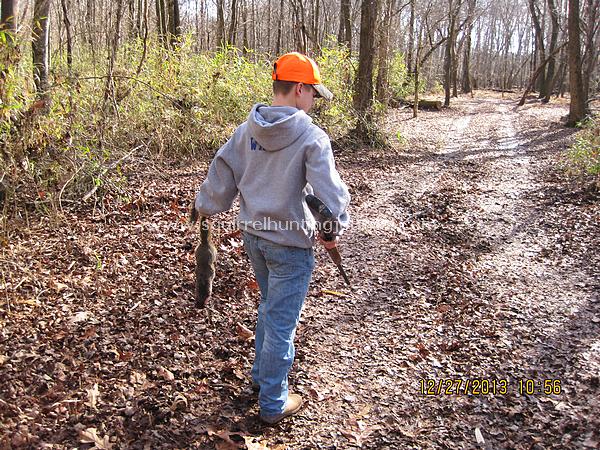
Sight in on a bench:
I like to start my squirrel rifle tuning from a bench, or as solid of a rest as you have access to. Using a bipod, shooting bag, or fixed shooting rest should give you the best results. The benefits here are ultimate accuracy. Short of being in a fixed vise(along with removing the human element), the bench will allow you to squeeze as much accuracy out of your rifle that you are capable of. This accuracy will aid you in the timber if you are slightly off the mark on a squirrel, you should still maintain a accurate hit. It’s certainly dependent upon your shooting skills, but how will you learn without practice? I like to start at 25 yards to gain a baseline of accuracy. A five round string of fire should create a “one-holed” group at 25 yards. If not you should:
1. Shoot a little more to see if “you” are the problem. Gotta be humble here and check your skills. Have someone else that is an accomplished shooter take a turn with your rifle. Brad and I use this technique to keep ourselves in check.
2. Make sure your scope is secure, and eliminate extra movement.
3. Change ammo. Rimfires are very picky about ammo, however this usually shows up at 50 yards.
4. Consider cleaning your rifle bore with just a patch and bore solvent. Bronze brushes can cause damage to the crown as they are sometimes harder than the steel of the barrel. A nylon brush would be a better choice. I usually won’t clean my rimfires bore until accuracy starts to diminish.
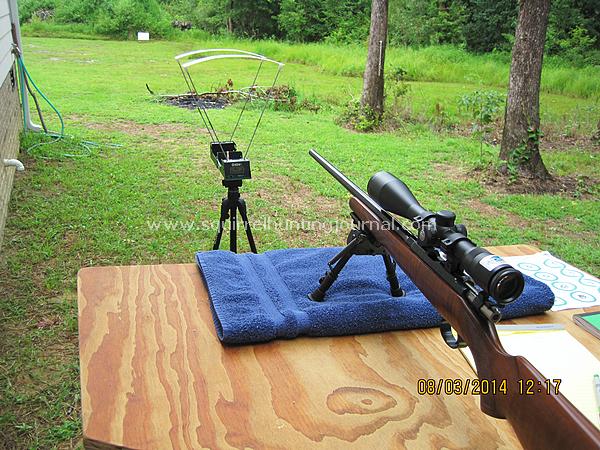
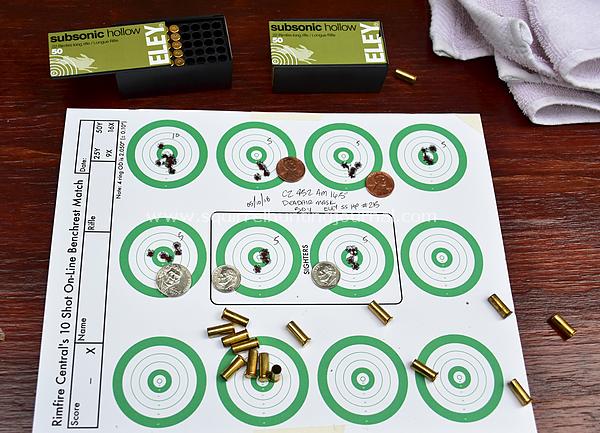
Once your 25 yard baseline is established I step out to 50 yards, only if I have a scope that goes above 9 power. This is a personal preference and you may shoot exceptionally at 50 yards with a 9 power scope, for me I’m wasting ammo at that distance with the lack of magnification. Scopes with a magnification top out of 9 power only get sighted in at a max distance of 35 yards, however I can still take squirrels at distances of 50 yards or more.
At 50 yards I still want to be as accurate as possible. If I have any shift of the group at this distance from the 25 yard initial sight in, I make adjustments. Once the rifle is hitting where I’m aiming no more adjustments are made through the sight in process. In all honesty, if you can keep a 5 round group inside a quarter or a birchwood casey one inch orange dot then you should be good to go. Minute of angle (MOA) at 50 yards is 1/2 an inch. I strive for that mark, but if 5 shots can be covered by a dime I’m thrilled. If the group is even penny worthy, I’ll save the extra ammo for the squirrel woods.
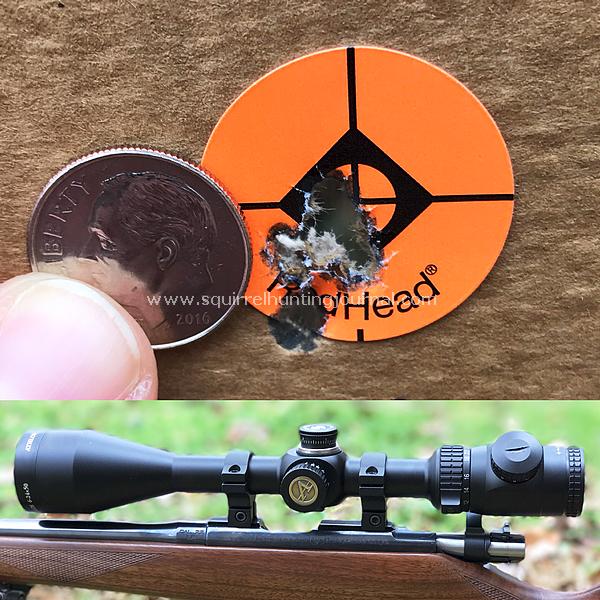
Next up is 35 yards. Why 35 yards, Nate? Well if you are shooting subsonic or standard velocity ammo you will generally be 1/2 to 5/8 of an inch higher than your point of aim. That can equal a miss if you aren’t aware of that knowledge. That’s why 35 yards is important.
Now you are back to 25 yards. Well why waste ammo here? What you should find with subsonic or standard velocity ammo is that your results will closely mirror that of 35 yards. With all of this knowledge flowing in, you and your rifle are getting on the same page.
One last stop at 15 yards for the reasons above. What you will find here as mentioned above is that you will be off, but in the opposite direction. You should see results of 3/4 to 1 inch low. Why? We tend to forget that our scope is position about 1.5 to 2 inches above the center of the rifle bore. It’s totally dependent upon the height of your scope rings, but the before mentioned measurements will be close. This means what your seeing through your scope is not what your rifle is aiming at. I have missed squirrels at 15 yard distances that left me scratching my head until I employed this technique in my sight in process. Missing a squirrel at 50 yards is one thing, but when you could reach out and touch the little furry rascal, missing at this distance is aggravating. It happens more than you would think, ask my buddy LaBrad! He received a little in-field shooting lesson on this very subject in 2014.
With this complete you should have everything you need to begin the other aspects of off season practice.
Practice in Hunting Positons:
This can be a difficult one to achieve. It’s really determined by the shooting area you have access to. For me shooting from my shooting stix is how I accomplish this. Squatting, kneeling, propped against a tree are just some of the ways you can practice. In all honesty, most off season shooting for me is done from the bench, but this step shouldn’t be left out of your portfolio of skills.
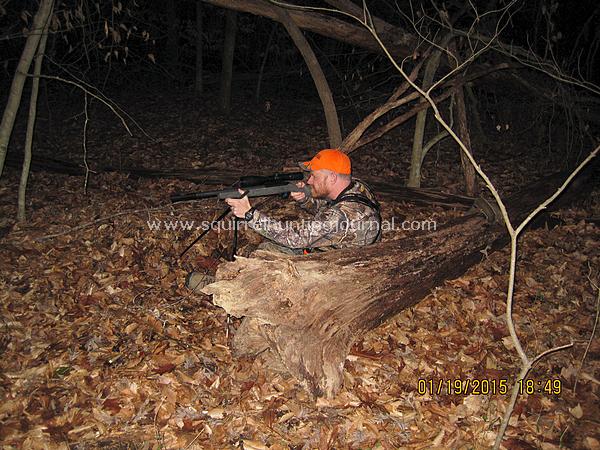
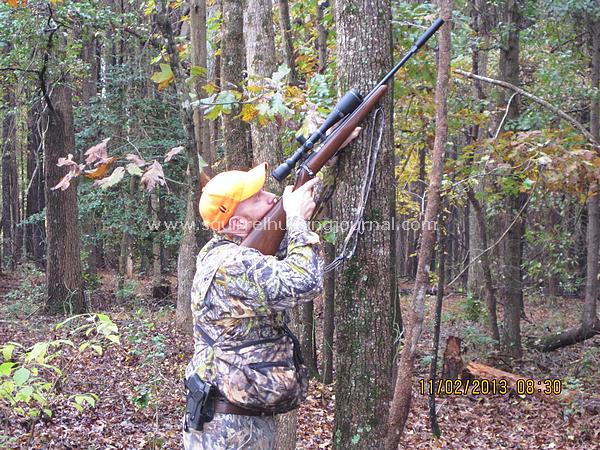
Target Choice:
Endless options are before you here. I like to sight in on paper targets, typically circle variety. Nothing more than personal preference for me. The one inch target dots are also a favorite once I have things zeroed in. Paper targets with the game of your choice printed on them are another good choice. If they are true to scale, then shooting at them at “in the field” hunting distances should mimic the real thing. I have a few metal squirrel targets, that are close to scale, that I practice on. As of late though when I have over ripe fruit in the house, typically bananas or tangerines (because they’re squirrel head sized) I set them up at 50 yards for practice. Being that they are reactive increases the fun of the practice session. A suppressed .22 round slamming into a piece of banana, roughly cut 1″x1″, will leave a smile on anyone’s face (Naner puddin’). Plus it’s just smaller than a squirrels head. That leads me to practicing on targets that are smaller than the game you are pursuing. “Aim small, miss small,” is the motto I invoke during both sight in and hunting applications.
It doesn’t get much worse than not being able to be accurate on a hunt. I’ve been there so I know how it feels. Stay sharp during the off season, because your season numbers depend on how well you and your rifle or rifles mesh.




Nate, I have not been out much this season due to some medical issues. However, I have been to the gun club range and working on rifles. I decided to get my dad’s Rem 582 out of the locker and try some targets with it. It is an early model, no serial # and walnut stock. I cleaned and oiled it, rubbed lemon oil in the stock, and scoped it with a Nikon 3×9. Well, at 50yrds it is shooting along with my 452 American and my Ruger 77/22. Hopefully by the time deer season is over, I can get out in the woods. Around here that’s good squirrel time, not many others out there. We can hunt till the last day of Feb.
Sounds like that Nikon fits that rifle perfectly. If she’ll run with a CZ 452, that’s a good rifle. We also can hunt until the last day of February. I certainly hope the action is good all the way to the end of season. Good luck out there.